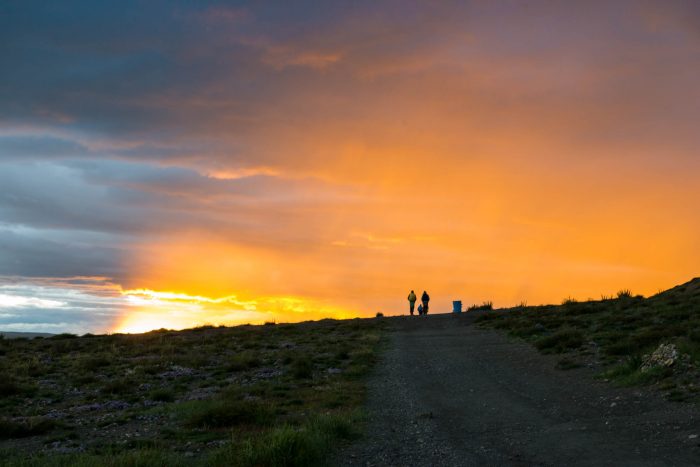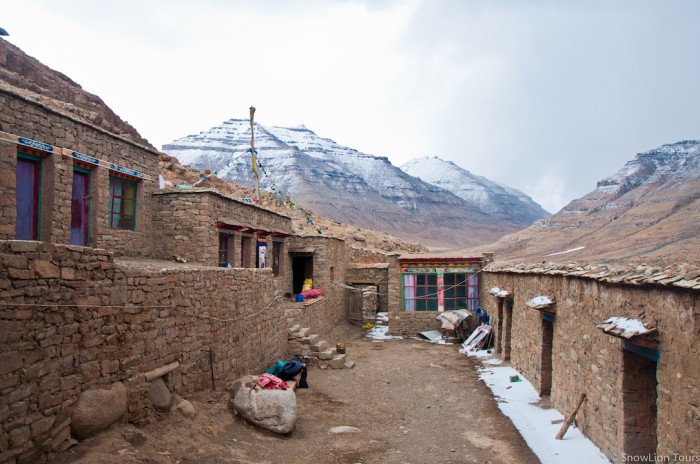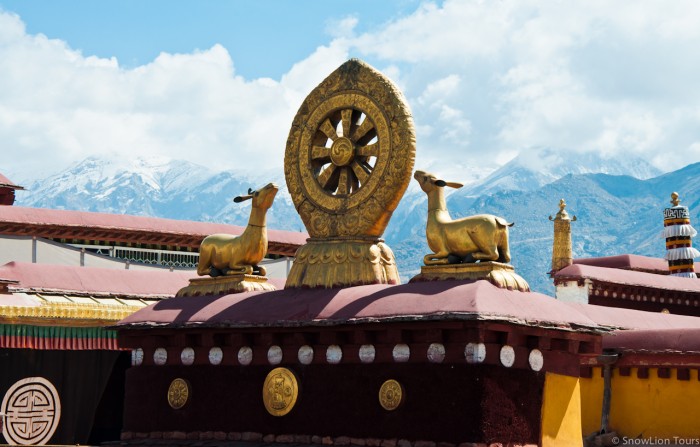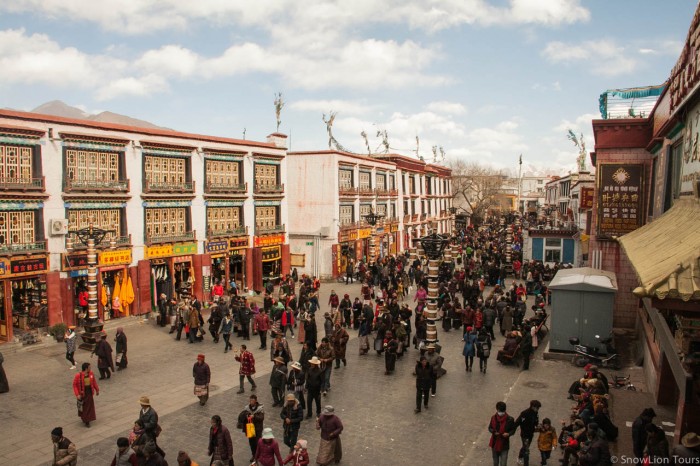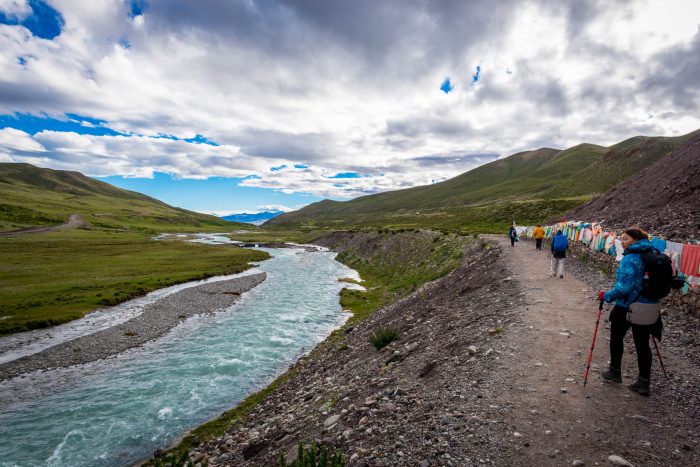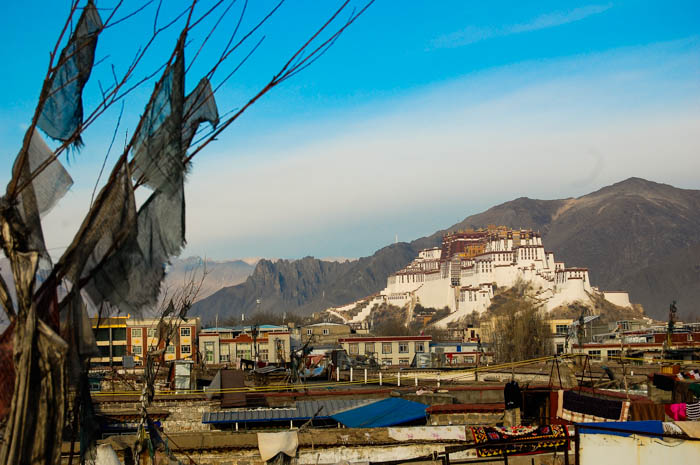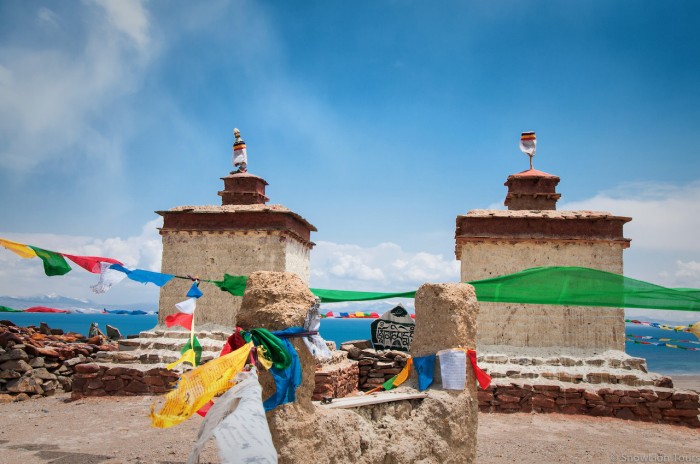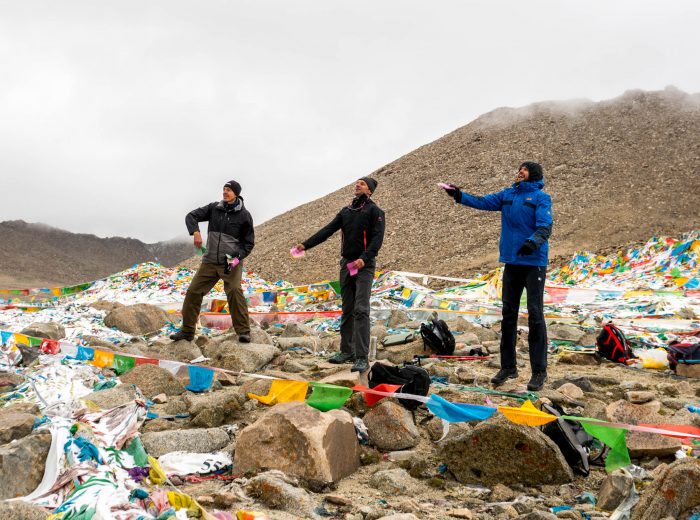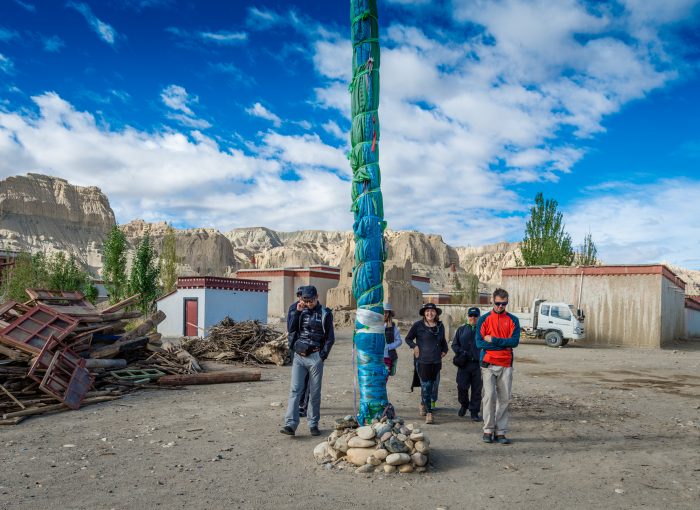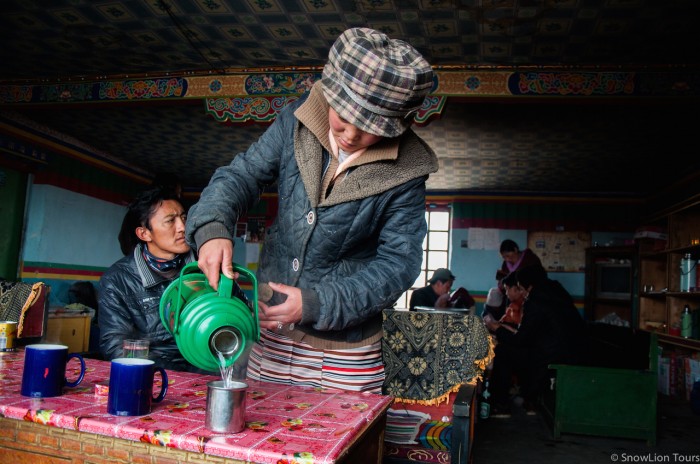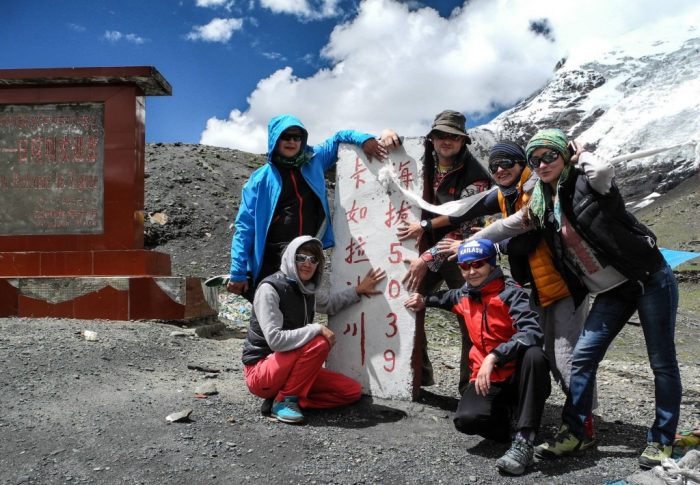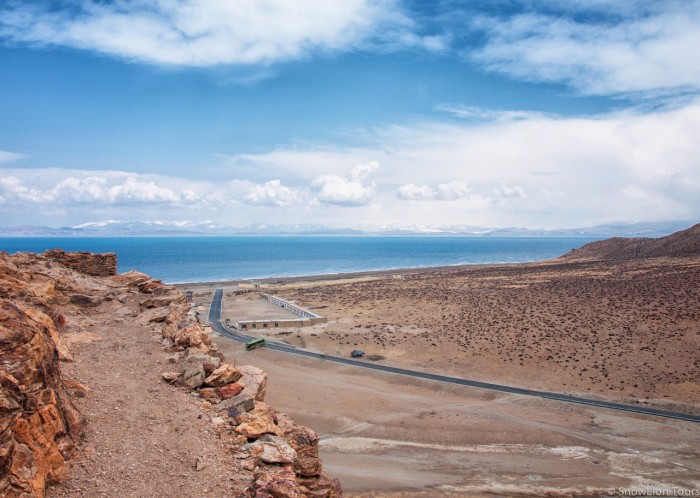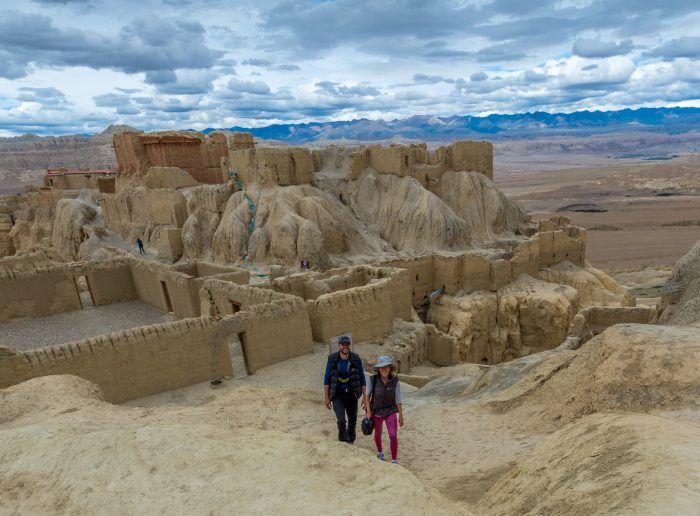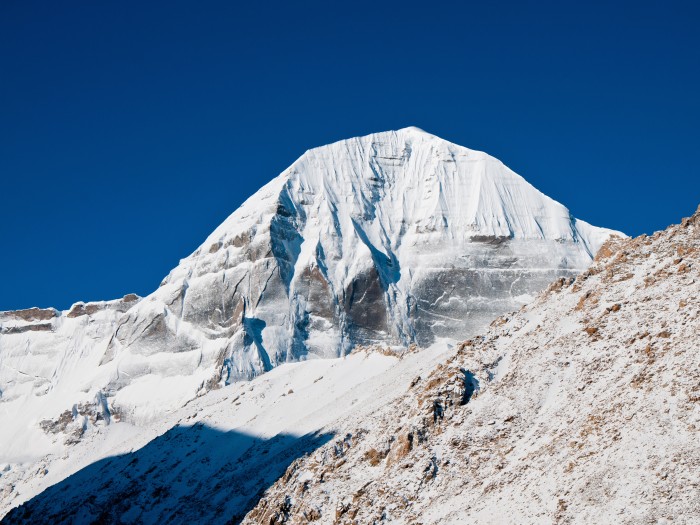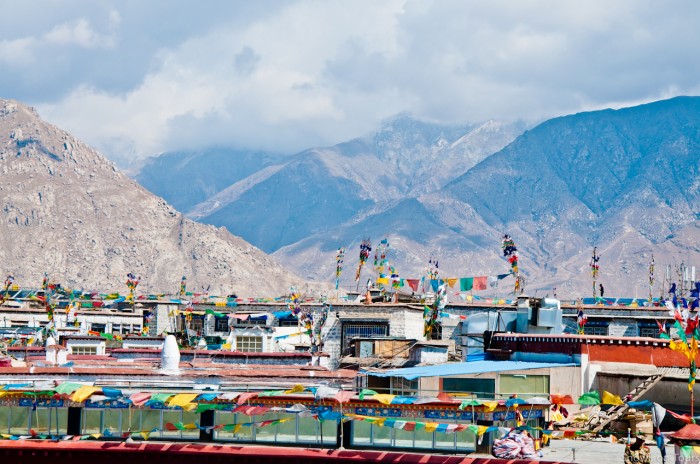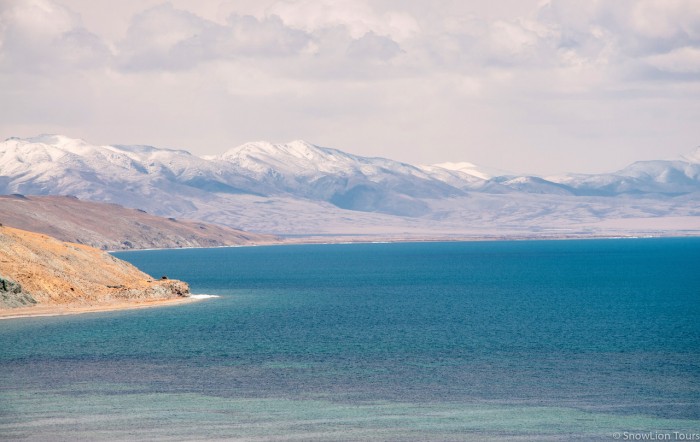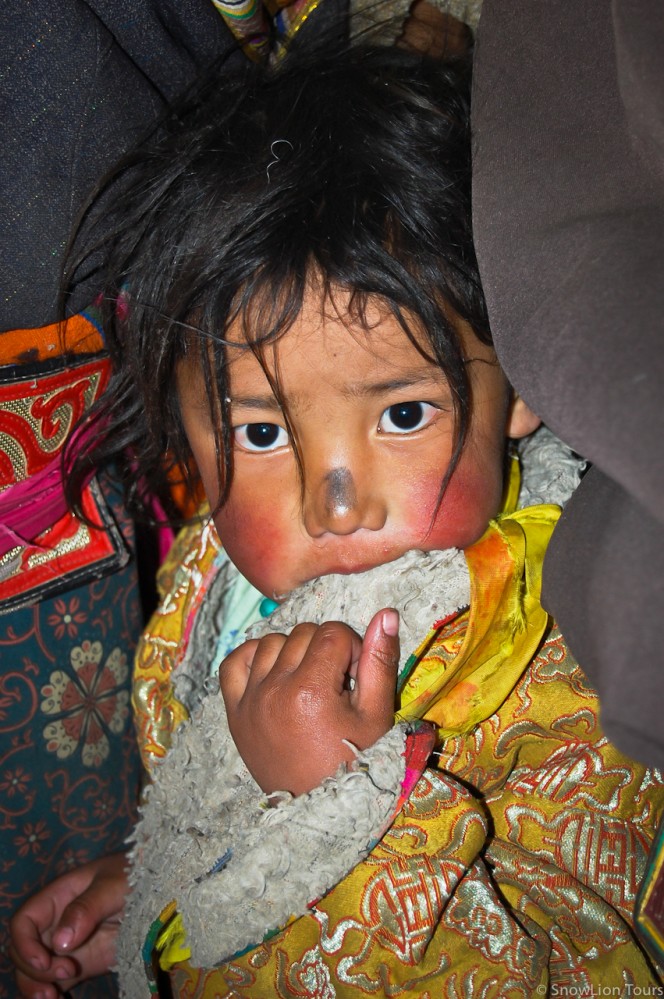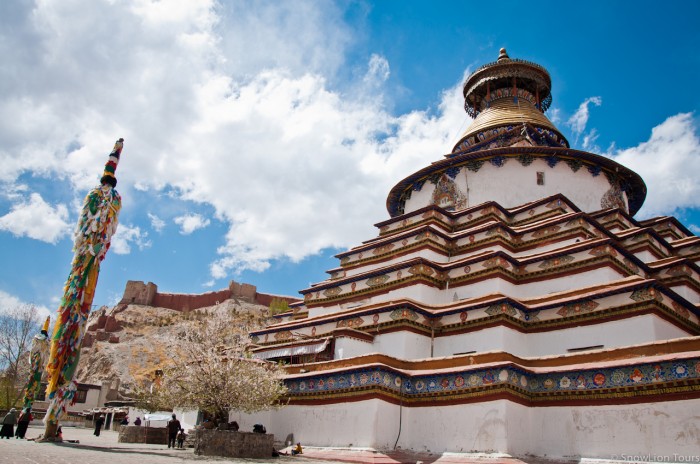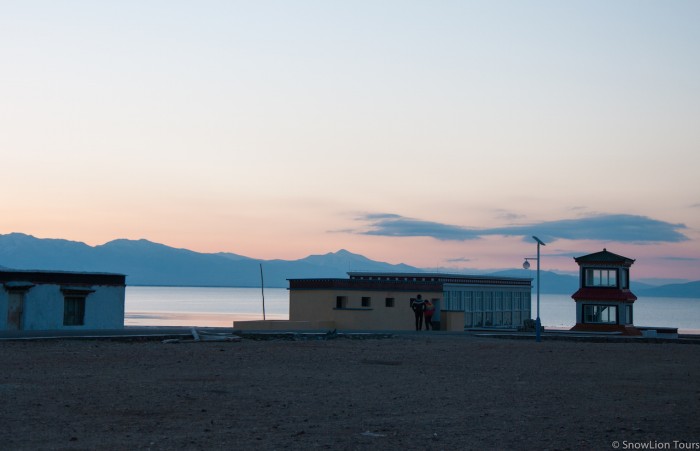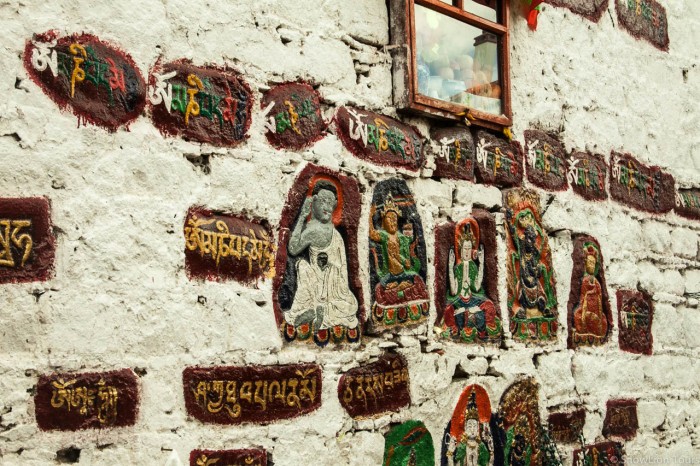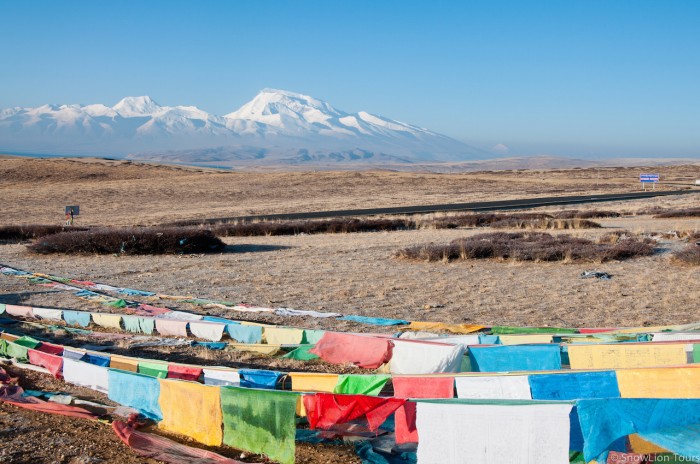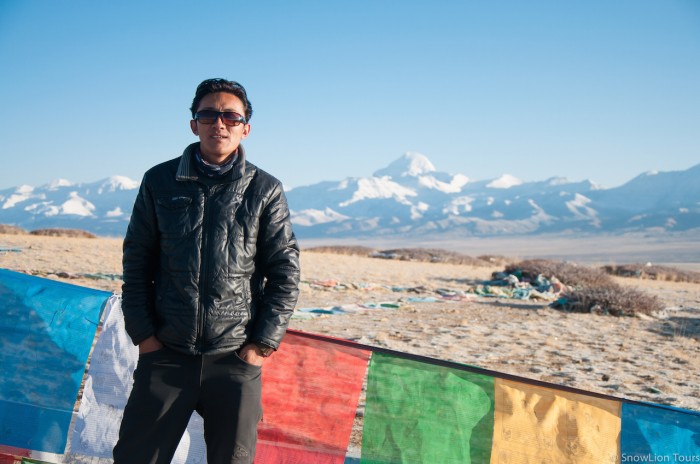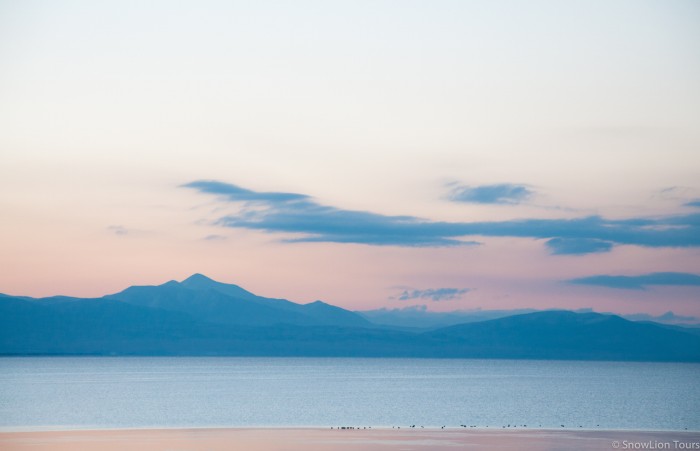Embark on a profound spiritual journey through the mystical landscapes of Tibet on our August Kailash Pilgrimage Tour. This transformative 15-day expedition takes you from the cultural treasures of Lhasa to the sacred Mount Kailash, revered by Buddhists, Hindus, Jains, and Bon followers as the spiritual center of the universe. You’ll explore ancient monasteries dating back to the 15th century, circumambulate the holy mountain in a traditional three-day kora, and witness the breathtaking beauty of turquoise lakes and Himalayan peaks. A special highlight of this journey is the visit to the enigmatic Garuda Valley, an archaeological treasure of the ancient Zhangzhung civilization and pre-Buddhist Bon tradition, where mysterious ruins and sacred sites remain largely unexplored by Western travelers. As you travel through remote nomadic regions and high mountain passes, you’ll experience Tibet’s rich religious traditions, connect with its spiritual heritage, and return with memories that will resonate for a lifetime. This carefully crafted journey balances cultural immersion, natural wonder, and spiritual practice in one of the world’s most extraordinary destinations.
Route: Lhasa ⇒ Yamdrok Lake ⇒ Gyantse ⇒ Shigatse ⇒ Lake Manasarovar ⇒ Chiu Hotspring ⇒ Garuda Valley ⇒ Mt. Kailash trek ⇒ Kyirong Border ⇒ Nepal or Lhasa.
Highlights
- Mt. Kailash trek
- Lake Manasarovar, Peiku Tso, and Yamdrok Lake
- Garuda Valley
- Cultural and spiritual experience
Details
- 15-day trip begins in Lhasa and ends in Lhasa
- 13 – Days begins in Lhasa and ends in Kathmandu
- Altitude from 3000-5650 m
Tour Costs
- 2450USD per person
- E-mail us for an exact quote
- See Prices & Booking for more information
Dates
- Group Tour: August 16th – 28th (ends in Kathmandu)
- Group Tour: August 16th – 30th (ends in Lhasa)
August 16 / Day 1: Arrival in Lhasa [3658 m]
Welcome to Lhasa! Arrival in the capital of Tibet, meeting with your guide. Rest at the hotel to acclimatize to the high altitude.
August 17 / Day 2: Lhasa
Morning trip to Drepung Monastery, located 10 km from Lhasa. Drepung is the largest Buddhist monastery and university of the Gelug school of Tibetan Buddhism. Drepung Monastery was founded in the early 15th century by Jamyang Choje, a disciple of Je Tsongkhapa, the great reformer and founder of the Gelug school. Before the construction of Potala Palace, Drepung Monastery also served as the residence of the Dalai Lamas.
In the afternoon, trip to Sera Monastery, which was also built in the early 15th century by Sakya Yeshe, another disciple of Je Tsongkhapa. In Sera, you will watch the famous philosophical debates of the monks. After the debates, you can perform a kora around the monastery.
August 18 / Day 3: Lhasa
Morning excursion to Potala Palace, the winter residence of the Dalai Lamas. Potala consists of 13 floors with a total height of 118 meters. Inside there are one thousand rooms containing about two hundred thousand images and statues of Buddhist masters and deities. Special attention is paid to the stupas containing relics of the Fifth and Thirteenth Dalai Lamas. Currently, Potala attracts thousands of Buddhist pilgrims. They perform koras around the Palace, recite mantras and prayers, and make prostrations. After lunch, visit to Jokhang Temple with the sacred statue of Jowo Buddha and Barkhor Square, where hundreds of Tibetans perform koras (ritual circumambulations) around the temple. Then visit to Ramoche Temple, which is the second most important after Jokhang. Ramoche houses the holy statue of Buddha at the age of 8, brought from Nepal in the 7th century.
August 19 / Day 4: Lhasa – Yamdrok Lake [4442 m] – Samding Monastery – Karola Glacier – Gyantse [3900 m]
Morning transfer through Kambala Pass (4794 m) to Yamdrok Yumtso Lake, which is considered one of the four most revered lakes in Tibet. Visit to Samding Monastery – the only monastery in Tibet administered by a female monk. The abbot of the monastery – Samding Dorje Phagmo – is the most important female incarnation in Tibet. Then travel through two mountain passes – Karola and Simila to the city of Gyantse. The first thing that catches the eye when entering the city is Gyantse Dzong fortress, which in former times served as the residence of local kings. The famous Pelkor Chode Monastery with the ancient Kumbum stupa, which were built in the 15th century, are located in the northwestern part of the city. Pelkor Chode was once the largest non-sectarian Buddhist learning center, and today only 2 main temples remain. Next to the main temple stands Tibet’s largest Mandala in the form of a stupa – Kumbum. It has many chapels that can be visited, ascending clockwise from one floor to another. From the very top, there is a magnificent view of the old city and the Dzong. Overnight in Gyantse.
August 20 / Day 5: Gyantse – Shalu Monastery – Shigatse [3836 m]
In the morning in Gyantse, you will have the opportunity to visit a factory where Tibetan carpets are handmade. Then a two-hour transfer to Shigatse – the second largest city in Central Tibet. On the way, you will visit the small Shalu Monastery, located 78 km west of Gyantse and 22 km south of Shigatse, founded in 1003 by the Tibetan abbot and 11th century teacher Sherab. Shalu became the first among the major monasteries and learning centers during the great revival of Buddhism in Tibet, as well as an important center of the Sakya tradition. Upon arrival in Shigatse, tour of Tashilhunpo Monastery – the residence of the Panchen Lamas. Here is an enormous statue of Buddha Maitreya (Buddha of the Future), where you can ask for good fortune and fulfillment of wishes.
Note: your guide will need some time to register your group in Shigatse.
August 21 / Day 6: Shigatse – Langzo Lake – Saga [4640 m]
Whole day traveling on mountain roads through 4-5 thousand meter mountain passes, which offer indescribable views of the Himalayan peak chain. You will pass through meadows and countryside and will be able to see small lakes and nomad camps with yaks and sheep. After about 180 km, you will stop at the beautiful high-altitude Lake Langzo at 4300 m. Herds of yaks and sheep graze around it. Late in the evening, you will arrive in Saga – a small settlement located near the Yarlung Tsangpo River (Brahmaputra). Overnight in Saga.
August 22 / Day 7: Lake Manasarovar [4500 m] and relaxation in hot springs, 8 hours
Driving through the valley, you will enjoy beautiful views of mountain peaks and vast valleys where nomads graze their herds of yaks and sheep. Further and further to the south-west, the landscapes will change to sand dunes, rocky mountains, and snow-covered peaks. Depending on the season, nomads and wandering traders dress in colorful national clothes. Lunch stop in the small town of Paryang, which is considered one of the highest cities in the world. In this small town, there is a feeling that the sky is so close that, by stretching out your hand, you can touch it. There are several Tibetan and Chinese restaurants in the city, as well as several trading stalls where you can buy cookies, drinks, and sweets. Passing by Lake Manasarovar in the afternoon, you will see the mighty peak of Mount Kailash for the first time. For the night, you will stay at a guesthouse by Lake Manasarovar.
August 23 / Day 8: Darchen – Tirthapuri – Garuda Valley – Darchen [4575 m]
You will spend the morning at Lake Manasarovar – one of the highest freshwater lakes in the world. This turquoise lake is full of fish and swans. Tibetans consider it sacred and call it “Mapham Tso” – the invincible lake. Manasarovar is also sacred to Hindus. Around the lake are 2 sacred mountains – Kailash and Gurula-Mandala, and Lake Raksekshi. On a hill by the lake is Chiu Monastery – an ancient monastery of the Drukpa Kagyu school of Tibetan Buddhism.
Then you will go to Tirthapuri – an important shrine in Western Tibet, which many pilgrims visit before doing the kora around Kailash. Tirthapuri Monastery stands on a cliff next to famous hot springs and Vajravarahi Cave, where Padmasambhava and his consort Yeshe Tsogyal meditated in the 8th century. You can do a kora around the monastery (1 hour walk), where you will encounter other caves and stupas, and at the end of the path there is a “karma testing hole” in the rock.
If weather conditions and road conditions permit, you will also be able to visit another ancient mystical place, Garuda Valley, the ruins of ancient Zhangzhung, the kingdom of the pre-Tibetan Bon religion. Garuda Valley and the ruins in Kunglung attract adventure seekers and esoterics from all over the world with their mystery, unexplored nature, and history.
Towards evening, return to Kailash and preparation for the kora.
August 24 / Day 9: First day of Kailash Kora – to Dirapuk Monastery
The entire kora around Kailash is 53 km long. The first day is quite easy. The kora path passes by the “cemetery of 84 mahasiddhas,” then on the left hand side on the mountain slope stands Chugu Monastery of the Kagyu school, which houses the conch shell of the Buddhist master Naropa. In the afternoon, we will reach Dirapuk Monastery, where we will stay overnight. This monastery preserves the cave where the Buddhist saint Milarepa meditated. Dirapuk looks directly at the northern face of Kailash. From the roof of the monastery, Kailash appears in all its might and beauty. Opposite the northern slope, Hindus pray to Shiva. Followers of Hinduism believe that Shiva’s abode is at the top of Kailash, and the peak itself is a reflection of Mount Meru – the cosmic mountain that is the center of the Universe. Buddhists consider Kailash the dwelling place of Buddha Shakyamuni in the form of the wrathful deity Chakrasamvara, patron of one of the highest tantras of Vajrayana Buddhism. Overnight at the monastery guesthouse.
August 25 / Day 10: Second day of Kailash Kora – Dolma-la Pass [5650 m] – Zutulpuk Monastery
The second day is the most difficult day of the kora, as you will have to cross the Dolma-la Pass (5637 m). Buddhists believe that all those who climb Dolma-la Pass get rid of sins and negative karma, thereby beginning a new life full of meaning and awareness. After climbing Dolma-la Pass, we will hang prayer flags, make offerings, and pray for the happiness of all living beings. Then the kora path leads down to Zutulpuk Monastery, which is also a pilgrimage site of Milarepa. Overnight at the monastery guesthouse.
August 26 / Day 11: Third day of Kailash Kora, view of Mount Nemo Nani – Saga
The third day will begin with a path along one of the cleanest rivers you have ever seen. The trail is gentle, and there is much more vegetation here. At the end of the valley, before turning right, you will have a stunning view of the snowy peak of Nemo Nani (7728 m). After completing the kora around Mount Kailash, return to Saga.
August 27 / Day 12: Saga – Drakar Taso – Kyirong
The return journey from Western Tibet reveals unforgettable panoramas. In clear weather, we will see the majestic Shishapangma, one of the fourteen eight-thousanders in the world. Our path goes through the sacred Gongtan-la Pass (5300 m), also known as Padmasambhava Pass – the legendary teacher who brought Buddhism to Tibet. This is the last high point of our journey, from where a picturesque serpentine begins into the valley.
On the way to the Nepalese border, we will visit Drakar Taso – the power place of the great yogi Milarepa, whose songs and life story have inspired Buddhists for almost a thousand years. Gradually, the harsh Tibetan pastures will give way to the lush greenery of Nepalese forests, and the thin mountain air will be replaced by revitalizing coolness.
In Kyirong, we will visit Padmasambhava’s sacred cave. Before entering the city, we will stop at a waterfall cascading down a rocky slope. According to legend, these waters were blessed by Guru Rinpoche himself.
In Kyirong, we will have free time to rest in cozy restaurants and walk around the city streets. We will visit the Pakpa Temple, built in the traditional Nepalese style, where 30 nuns live today. The day will end at a comfortable hotel in Kyirong.
August 28 / Day 13: Kyirong – Rasuwa Gadi (departure to Nepal) / Kyirong – Shigatse
Morning short transfer to the Nepal border. Part of the group crosses the Tibet-Nepal border and travels to Kathmandu – the capital of Nepal. The border works from 10 am to 3:30 pm. Our Tibetan guide will accompany us to the border on the Tibetan side and help with formalities. This will take 1-2 hours. Afterwards, you will cross the bridge and enter the Nepalese border. On the way to Kathmandu, you will see Langtang National Park, snow-capped peaks, cultivated lands, and the Rasuwa people. Arrival in Kathmandu towards evening. (Note: some parts of the road are unpaved).
Those returning to Lhasa will spend the whole day on the road, as there are speed limits on the highway. Short stops are provided for walks and photos. Along the way, you will see the peaks of Shishapangma, Cho Oyu, and others, and cross the Yarlung Tsangpo River before Lhatse. Arrival in Shigatse late in the evening.
August 29 / Day 14: Shigatse – Yungdrungling Monastery – Lhasa
On the way back to Lhasa, you will visit Yungdrungling Monastery – one of the main Bon monasteries in Tibet. In the evening, returning to Lhasa, free evening for shopping, restaurants, and tea houses.
August 30 / Day 15: Departure from Lhasa
Transfer to the airport or train station. Farewell to Tibet!






